The Lives of Four Famous Writing Couples of the Victorian Era
The Victorian period is one of the most distinguished periods in literature, known for its pomp and circumstance and its excellent traditional poetry and novels. Some of the writers in this article are household names, others are more obscure but still distinguished in their own right. Perhaps you are like me and didn’t even realize that some of the writers you have studied throughout your education or have read for fun are married to other famous writers. It becomes even more interesting when we learn that many these writers’ relationships were nothing less than stormy, creating a ripple effect of chaos and drama across circles of family and friends. It seems unexpected that these Victorian-era writers, who are portrayed so stiffly in the paintings and photographs, led such turbulent lives and were often the center of aspersion and scandal. In this article, we’ll look at the ups and downs of four different writing couples and the
George Eliot and Henry Lewes
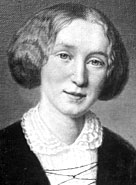
Mary Ann Evans, better known as George Eliot, was one of the most acclaimed writers of the 19th century, having written several novels and becoming an editor of the Westminster Review for two years—an atypical position for a woman of the Victorian period. Evans chose a male pen name since she desired to be a successful novelist and wished to be evaluated solely on the basis of herwork, not her gender. She indeed succeeded in this endeavor, receiving the same critical acclaim as writers such as Charles Dickens and the Bröntes.
Evans was not a typical lady of the Victorian period—she became involved with a couple of married men in her lifetime, including the philosopher and fellow writer for the Westminster Review, George Henry Lewes.
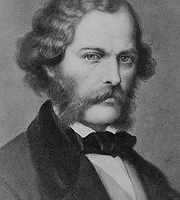
Her first affair was with publisher John Chapman, the man who initially asked Evans to become an editor for the Review. Lewes’ marriage situation was quite rocky before meeting Evans. His wife, Agnes Jervis, was not faithful and had an ongoing affair with Lewes’ friend Thornton Hunt, bearing him five children while still married to Lewes. Desiring to be on good terms with his wife, they essentially agreed to an open marriage. His marriage to Jervis was over, barring the legal aspect, when he met Evans. Evans and Lewes subsequently became lifelong companions and considered themselves “spiritually married”. Their open admission to the relationship was quite scandalous but neither Evans nor Lewes seemed particularly bothered by this.
Lewes himself was a successful writer and philosopher. He contributed regularly to the Westminster Review and other quarterlies. His writing ranged from prose to science to philosophy, making him a diverse scholar with a wide range of interests. His best known writing is his book The Life of Goethe, a work of prose which became quite popular in Germany, but he mostly supported himself through his regular contribution to reviews and quarterlies.
Upon Lewes’ death, Evans channeled her grief into putting the finishing touches on Lewes’ manuscript,
Mary Shelley and Percy Shelley
Mary Wollstonecraft Godwin was the daughter of political philosophers William Godwin and Mary Wollstonecraft. Her mother died when she was days old; her father later remarried and provided her and her half-sister with a liberal education, encouraging her to adhere to his liberal beliefs and theories.
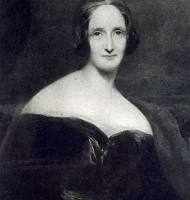
When she was seventeen, Mary fell in love with one of her father’s young wealthy political followers, Percy Bysshe Shelley. Percy was already married to Harriet Westbrook Shelley but this didn’t stop him from pursuing Mary, having been won over by her elegant looks and superior intellect. Despite her father forbidding her from having a relationship with Percy and after Percy’s attempted suicide, they fled to France to elope, leaving Harriet Shelley behind.
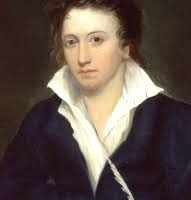
The Shelleys continued to lead a difficult life together. Over the course of their years together and their many travels around Europe, Mary gave birth to four children but only one survived to adulthood. There was chaos in determining the affairs of Percy’s grandfather’s estate and before eventually inheriting the estate, he was constantly on the run from creditors. Mary’s half-sister and Percy’s wife committed suicide. When Mary was only 24 years old, Percy drowned in a sailing accident. The rest of Mary’s life was haunted by illnesses caused by the brain tumor that eventually killed her at the age of 53.
Despite the melodrama that surrounded their circle of family and friends, Mary and Percy Shelley were extremely prolific writers. On their numerous travels, they maintained a rigorous regimen of reading and writing. Mary published several novels, essays, short stories, biographies, and travel journals throughout her life. Percy, mostly known as a major Romantic poet of the period, published poetry, novels, and essays throughout his short life.
Robert Browning and Elizabeth Barrett Browning
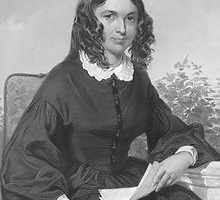
Elizabeth Barrett Browning, known as Elizabeth Barrett Moulton-Barrett before her marriage and known as “Ba” to her immediate family, was from a wealthy family who owned estates in England and Jamaica. Her grandfather owned sugar plantations and mills and owned a vast amount of land in Jamaica, the primary source of her family’s wealth. Despite her family having lived in Jamaica for many generations, her father chose to raise his family in England. The Browning family was very encouraging of Elizabeth’s education and educated her at home privately. From a young age, she was quite precocious and she loved to read and write. Barrett Browning wrote her first known poem between the ages of six and eight (the dating of the document is unclear) titled On the Cruelty of Forcement to Man.
Browning was known for her social and political discourse in her poetry and was indeed famous for it. She was inspired by Mary Wollstonecraft’s Vindication of the Rights of Woman and agreed with the views espoused in the document. She also took a firm stance against slavery, a position that created a
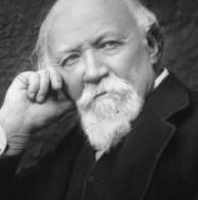
rift between her and her father, whose plantations in Jamaica relied on slavery. Browning was also known for her strong will. After her mother’s death when she was twenty-two years old, her mother’s sister stayed with the family to care for the children. This didn’t work very well for Barrett Browning who was strong-willed and often clashed with her aunt. Later, Barrett Browning stood by her husband when her father disowned her for the marriage. Her family disapproved of Robert Browning, thus creating distance in what was once a tight-knit family.
Robert Browning and Elizabeth met shortly after Robert read her sonnets and wrote to her, professing his love for his poetry (and later, for her). Elizabeth’s distant cousin and friend, John Kenyon, arranged for the two to meet, thus beginning the famous romance between the two writers. Elizabeth was initially worried that Robert was disingenuous about his love for her; after all, she was an invalid and relied on opiates and laudanum to ease her pain throughout much of her life (due to an undiagnosed condition in childhood). They kept their courtship a secret and married privately at St. Marylebone Parish Church. After the honeymoon in Paris, Robert took his wife to Italy, where they remained for the rest of Elizabeth’s life.
Paul Verlaine and Arthur Rimbaud
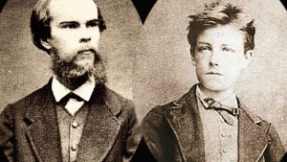
Paul Verlaine and Arthur Rimbaud were French poets and contemporaries who, unlike the other authors portrayed so far, had a brief and quite turbulent affair. The relationship began when Rimbaud wrote to Verlaine, who responded with a one-way ticket to Paris. Rimbaud then traveled to Paris and resided briefly in Verlaine’s home with his family. Verlaine was married at the time and his wife was pregnant, a relationship that was already in shambles, due to his alcoholism. Shortly after Rimbaud arrived, Verlaine abandoned his family to go to London with Rimbaud.
In London, Rimbaud and Verlaine essentially lived in poverty; they made a paltry living from tutoring. Together they led a drug- and alcohol-fueled lifestyle and often wrote and argued in such inebriated states. They frequently attended bars together and even harassed other patrons. Their fights with each other and others were often physical and their relationship increasingly grew more bitter as time passed. The constant arguing eventually caused Rimbaud to leave and return to Paris. A couple months after Rimbaud left, he wrote to Verlaine, asking him to meet at a hotel in Brussels. The reunion did not go well. An argument led to Verlaine drunkenly firing two shots at Rimbaud, one of which wounded Rimbaud’s left wrist. After the incident, Rimbaud returned home and continued to work on his poetry. Rimbaud is best known for his prose work Illuminations and the Symbolist work A Season in Hell which greatly influenced many other writers.
Verlaine served jail time for the incident with Rimbaud. During his time in jail, he converted to Catholicism and gave up his tumultuous lifestyle. After he was released, he traveled to England and stayed in Lincolnshire where he taught French, Latin, and Greek at a grammar school. However, toward the end of his life, having returned to Paris, Verlaine fell back into his old lifestyle. He again succumbed to alcohol and drug addiction, and lived in poverty once more, spending much of his time drinking in Paris cafes. His work was greatly admired and he had enough support in his last days to keep him going but his poor habits and health caught up to him; he died at the age of 51 in Paris.
Having studied these authors’ lives, I’ve realized that most of the authors whose works have secured themselves in the literary canon were truly extraordinary individuals. All of the authors studied in this article were responsible for transforming literature and influencing countless other writers who would go on to make major contributions to literature. They may or may not have led morally exemplary lives but their experiences and habits must have contributed to the creative process in some way. Perhaps it is a writer’s turbulent disposition that inevitably makes them prone to scandal and infamy, as it would be difficult to to revolutionize literature or any other art form without some degree of rebelliousness. These writers definitely pushed the boundaries, were alienated from their friends and family and each other, shocked the public, but managed to make invaluable contributions to literature and poetry that we continue to study and appreciate today.
What do you think? Leave a comment.











I truly recommend Shelley’s Mathilda. The book is definitely a hidden literary gem. Her writing is beautiful as can be expected, and the tale is told in a classic, gothic style. It was particularly interesting to me considering the autobiographical aspects of the story. While it is not exactly her life, there are many similarities between this book and the events in her life.
That book marked the last book I ever had to read for university! *victory dance*
No really, I loved it.
I don’t think I’ve heard of that one! I definitely have to read it now. Thanks for letting me know!
Victorian literature is my favorite period of British literature, and Eliot is truly a remarkable writer. The characters of Middlemarch are wonderful, and Eliot’s examination of humanity, our expectations, our needs, and our fears is truly a great work of art.
Middlemarch is defiantly an outstanding work of literature. There is a great variety of characters and they strangely mirror ourselves.
Since I am not used to reading classic novels, I found Silas Marner really interesting to read and it got me engaged in the classics. George Eliot is a really good writer. I want to read all of her books now.
Yes, I completely agree. I loved reading Eliot immediately. I don’t think I’ve read Middlemarch, though. I read “Scenes of Clerical Life” about a year ago. I’ll have to put Middlemarch on my reading list.
It doesn’t surprise me that these writers led such turbulent lives, but it was interesting to read about them. One of my professors, visiting from the UK this semester, doesn’t believe writers’ lives inform their stories but I would have to disagree to an extent. I think the lives definitely add some kind of dimension to their work, and I wish the lives were taught as much as their works.
I agree! As an English major, I wish we learned more about authors’ personal lives. I also believe that personal experience does inform a writer’s story, seeing as most people write what they know.
I love reading articles that include the Shelleys- I teach English and you have no idea how many kids are surprised to hear what Shelley wrote. Gret article!
Agreed, love the interesting backstory for the Shelleys and the competitive dynamic underlying their relationship. I would assume that it pushed them both to produce the great works that they did!
Thank you. I had no idea about how crazy the lives of the Shelleys were before I started researching for this article. I also had no idea they were married!
I am not very knowledgable about Victorian writers, which is why I found this article particularly intriguing. Thank you for writing it.
I’m glad you found it informative! Thank you!
Wow that was a cool read! It is always quite interesting to read about the issues society and peoples were plagued with then and how it has , or hasn’t, changed throughout time- guess relationship struggles just haven’t changed nearly as much as our style’s. Great article!
I was quite surprised to see how dramatic these couples’ lives were, and like you said, it just showed me that relationships in the Victorian era weren’t necessarily any less dramatic than now.
Those who enjoyed reading this article might like to take a look at _Parallel Lives_ by Phyllis Rose. She portrays five intellectual Victorian couples including Jane Welsh and Thomas Carlyle, Effie Gray and John Ruskin, Harriet Taylor and John Stuart Mill, Catherine Hogarth and Charles Dickens, and finally George Eliot (Marian Evans) and George Henry Lewes.
Thanks for letting us know about the book! I will be sure to look at it.
This is a great piece. I took a class on Victorian literature, and we studied authors like Dickens extensively. It was one of my favorite classes!
Thank you! I wish I had learned more about authors in my classes instead of simply looking at the work.
Even though I study literature, I’ve never known much about these couples, so this was an interesting read! It would have been interesting to see if these relationships had any significant effects on their writing (or at least some specific examples)… but perhaps these relationships are the very reason their writing was popular! In my opinion, readers often tend to relate best to “turbulence,” and these writers clearly had a wealth of experience to draw upon.
One other note (more on the critical side): In your first few paragraphs on Elizabeth Barrett Browning, I struggled with your different uses of her name. You referred to her as Elizabeth, Browning, and Barrett Browning. Now it probably would have been fine if she was the only Browning in the section, but since you also referred to the Browning family and her husband Robert Browning, it became a tad bit confusing. I understand that sometimes using only one name can seem repetitive, but in this case, I think it would have made your point a little more clear. Otherwise, great article!
Thank you! Someone mentioned the same thing earlier about the confusion in the section about Elizabeth Barrett Browning. It was difficult to write about her without sounding awkward because I prefer to use last names. I suppose I should have stuck to just using the first name to save the confusion.
It is always fascinating to delve into the personal lives of influential figures, especially historical persons. Their life choices seem to rebel so wholeheartedly against the social expectations of their time, and I can find a connection between the radical nature of their romances, and their works ability to be relevant and interesting to contemporary readers.
I agree, learning about the personal lives of influential authors is very interesting and makes them more relatable.
Mary Shelley is a gothic master.
It is extremely interesting to know more about the personal lives of the great writers. Mary Shelley is the author of “Frankenstein: or, The Modern Prometheus”. This was written as sort of a challenge to write a ghost story, and was to be a short story. it was published anonymously in 1818 and is an incredible work that has survived all these years. Who among us has not heard of Frankenstein? The article was very interesting and I enjoyed reading it. I did have to reread part of the section about Elizabeth Barrett Browning because she was referred to in this text by different names. I didn’t mind the reread because the material was fascinating to me. I will look for more work by this author.
Sorry about the confusion! I wasn’t really sure if I should use her first name or her last name (I prefer using last names) and I must have missed something while editing.
Words cannot express the degree of love I have for this article. It combines my love of literature with my love of stories and gives a good insight on the lives of some of the greatest literary figures of the time. Well done.
Thank you very much!
I’ve always been fascinated by literary couples. Thank you for writing this article!
Same here, I thought it would be fun and interesting to write about. Thank you.
This article was extremely interesting. I knew about the Shelley’s, but not of the others. It was extremely informational and just scandalous enough. I loved it.
Thank you. I thought it would be an interesting topic and I learned a lot about these couples while writing it.
Fascinating article! I must confess the only Victorian novel I’ve actually read has been Jane Eyre. But I loved studying this authors back in high school. They really lived such extraordinary lives which could only lead to writing such masterpieces. I really need to pick up some Mary Shelley some time!
Thank you!
Really interesting article! It’s always cool to discover the person behind the work. I feel like our society often over looks that, even in present day. Actors for instance, we see them in their work and think that’s who they are. We forget that they have flaws and that we don’t really know them at all.
I completely agree! I think that authors are overlooked as well. Throughout my education, the focus has been primarily on the work itself, rarely have I studied the life of an author in class.
Great piece — it made me think of other famous literary pairings or collaborations that came later, in the late nineteenth and early twentieth centuries: Gertrude Stein and Alice B. Toklas, the non-romantic relationship between Ezra Pound and Marianne Moore, Edna St. Vincent-Millay and George Dillon, Mina Loy and Arthur Craven … it was a period of great literary proliferation in the imagist and modernist circles only enriched by their various liaisons and mentor-pupil interactions.
I love this article! Though I can hardly say this is a surprise, as I’m a big fan of Victorian literature. A quick question for you: are you sure neither George Eliot nor her partner were at all troubled by their relationship? Evans was largely shunned from society, and published her novels anonymously in the beginning. It wasn’t until another came forward, claiming to have authored them, that she took credit for her work. Of course, society is always quick to catch a star, and accepted Evans back into its less-than-nurturing folds.
While researching this article, I started to get the impression that George Eliot chose her own happiness over trying to fit into society. I can imagine that it probably made her unhappy to be shunned by society but she was firm in her lifestyle choices and eventually found acceptance.
The Shelley’s are like the ultimate writing couple. Totally talented, totally awesome. All their works are great. The dynamic duo right there~
People often tell me that writers shouldn’t live together, and after reading these summaries (particularly that of Paul Verlaine and Arthur Rimbaud), I can see why. I disagree, however, with “should” or “shouldn’t” statements. My girlfriend and I are both aspiring writers, but I think any relationship can work if both partners put forth great effort.
If you’re interested in writers’ personal lives, check out the Brontë family. They went through some tumultuous times, to say the least.